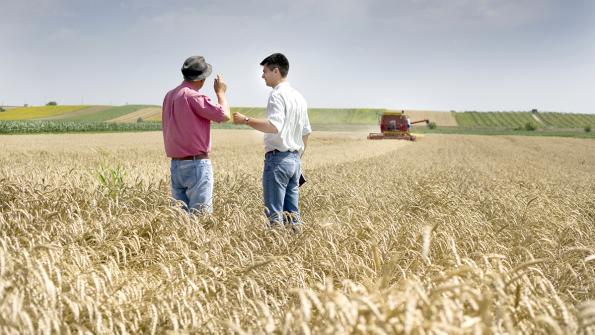
The advancing age of U.S. farmers has been a concern for years. The widening split between farmers’ collective age and that of the general workforce is now over 15 years.
In recent years, the USDA has set up programs attempting to lure, or assist, younger people to farm. An example: on October 8, the USDA announced $17 million “in grants for organizations that will develop training and provide other resources for beginning farmers and ranchers across the nation,” according to an agency statement. “The awards are made through the Beginning Farmer and Rancher Development Program. … Since 2009, 184 awards have been made for more than $90 million through the Beginning Farmer and Rancher Development Program.”
But is the situation really that dire?
After crunching numbers and studying the situation, Carl Zulauf, a well-known and respected agricultural economist at Ohio State University, says the sky isn’t falling. In early October, Zulauf spoke with Delta Farm Press. Among his comments:
On the aging demographic…
“My reading of the aging farmer demographic question is that it’s far richer, or complex, than simply looking at the rising age of the farming population.
“First, if you look at the age of farmers relative to the overall U.S. population there is either very little difference or, over time, the farming population has actually gotten somewhat younger over time.
“Second, historically farmers have been older than the general U.S. population. That’s a reflection, I believe, of the enterprise itself. Farming is capital intensive and it takes time for the necessary capital to be accumulated in order to farm.
It isn’t uncommon for sons and daughters of farmers to go off and work elsewhere then come back to the farm at a later date. That happens for a variety of reasons – perhaps the retirement of their parents. Also, simply because they, after being away for some time, now have the capital means to invest in the operation.
“I see no reason those two elements won’t continue into the future.”
Considerations
On more recent developments…
“Consider a couple of more recent considerations. There is no question in my mind that one of the defining characteristics of farmers is that they love to farm. Consequently, many of them remain in farming much longer than those in other professions.
“It’s important to recognize the impact mechanization has had on farmers’ ability to work later in life. I’m not sure what retirement age should be used when speaking of farmers but I don’t think it should be 65.
“If you look at some of the things happening at the edges of mechanization and technology with robotics, there’s no reason to believe current farmers won’t be able to continue on the land even later than their fathers and grandfathers. This is continuing trend.
“Consider GPS, which by all accounts has significantly reduced the stress of planting and harvesting a crop. Every farmer I talk to say it’s one of the last things they would want to give up. It’s just worth so much in reducing mental stress – one less thing to worry about when you’re combining or planting. Driving straight lines in a field – critical to a successful operation -- is no longer a drain mentally.”
On the “local food movement”…
“There is a large, new entrance route into agriculture that has become increasingly evident. It’s tied to the local food movement and largely involves middle-aged professionals who want to return to an agricultural way of life.
“They want this irrespective of whether they’ve ever been on a farm, or not. You know, ‘I’m 40 or 50 and have had success in my career. Now, I’ll take my money and buy some acreage and grow herbs, grow apples organically, produce cheeses.’
“These people are farmers but don’t grow corn, soybean, cotton and rice. They aren’t producing peanuts. These people service a different niche of society. They speak to the increasing diversity of agriculture beyond the traditional scope.”
Young farmer programs
What about the investment of taxpayer dollars to assist young farmers to get into agriculture? Considering what you’ve said is that a wise use of public resources?
“I don’t think we have a good assessment of how those programs are functioning. Are they meeting their goals?
“However, I also believe society has the right to decide the issues it thinks are worth putting money into. If this is an issue that resonates with society, then money should go to it. There are a variety of different programs that we fund.
“I also believe, as with any public policy, we should invest in assessing whether such programs are reaching goals. That’s where I’d like us to encourage not only the development of these programs but in the assessment of their performances. That isn’t just to be able to say, ‘that doesn’t work.’ It is to say, ‘okay, this does work and is the best way to help people become farmers.’”
About the Author(s)
You May Also Like




